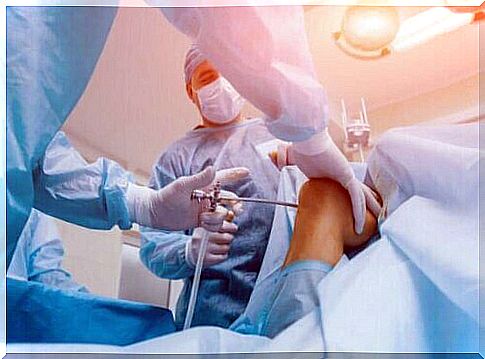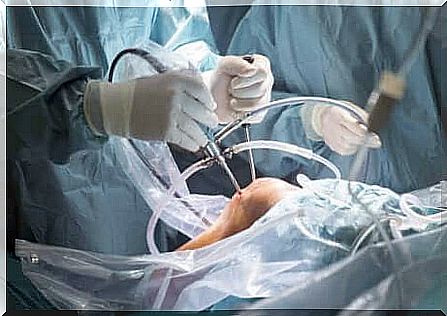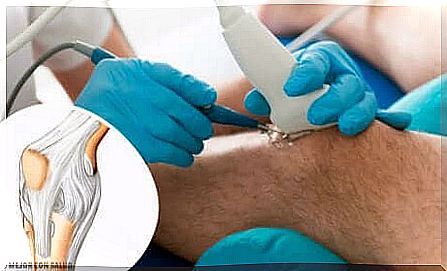Knee Surgery: What Are The Risks?
Currently, knee surgery is safe in the majority of cases. Like any surgical procedure, it involves certain risks that are not usual. Discover this process and its benefits.

In some cases, knee surgery is the only option available to treat or fix problems that present themselves in that joint. This process is not without risks and it is generally a choice which one resorts to when there is no other alternative.
In young people, knee problems often appear after practicing a sport. They can also be due to a professional activity. In the elderly, the most common is that knee pain obeys degenerative processes specific to aging.
Sometimes pain in this joint seriously affects mobility and quality of life. Under these circumstances, knee surgery is often used to resolve the problem. This is also the case when you suffer from a major lesion: the only alternative is usually to operate.
Knee surgery

There are several types of knee surgery and each meets the specific needs and conditions of each patient. We thus find three operations of this class. It is :
- Total or partial replacement: this is the most common type of knee surgery, which involves removing the joint and replacing it with a prosthesis with plastic, ceramic or metal components. This surgery is performed when the damage is irreparable.
- Arthroscopy: This is a minimally invasive knee surgery that involves removing or repairing damaged menisci, a cruciate ligament, or cutting pieces of torn cartilage. It is also useful for performing synovectomy, which is the removal of the membrane lining the joint.
- Osteotomy: it is performed when the damage affects only part of the knee. During this operation, the shape of the bones is changed and they are repositioned to avoid that there is a weight in the affected part. It is also used when a ruptured joint has not completely healed.
Risks of total or partial replacement
In the majority of cases, total or partial joint replacement is very effective in solving knee problems. Like any surgical procedure, it involves certain risks, the most common of which are:
- Thrombus formation: this is the most common complication. The surgeon always takes precautionary measures, which include blood thinning medications, leg elevation, exercises, and compression stockings.
- Infection: It is estimated that 2% of patients get an infection within two years of having this knee surgery. She can prevent herself by taking antibiotics or giving them during the operation.
- Osteolysis: This is the breakdown of bone adjacent to the implant and usually requires further surgery.
- Implant fracture: this is a rare complication that can be prevented by avoiding excessive or inadequate physical activity.
- Others: In very rare cases, there are allergic reactions to the metal of the implant. Improper placement of the implant can also cause dislocations and a blow could cause its components to jump or move.
Risks of arthroscopy

The risks of arthroscopy are very slim. Indeed, as we have already noted, it is a very minimally invasive knee surgery. Some of the complications that can eventually occur are:
- Anatomical damage: Cartilage, ligaments, tendons or other structures could be damaged due to surgeon error or due to anatomical abnormalities of the patient.
- Infection: it is very rare and is controlled by the administration of antibiotics.
- Limitation of movement: it is generally temporary and very rarely permanent.
- Thrombus: we prevent their formation with the anticoagulant measures that we have already mentioned previously.
- Complications related to anesthesia.
- Damage to the arteries, veins or nerves: if there is any, they are minimal and almost never of great importance.
Risks of osteotomy
Osteotomy is a type of surgery that is done infrequently because, sooner or later, it ends up requiring a joint replacement. It involves removing or adding a bone wedge in the tibia or femur to remove weight in the damaged knee area.
The risks involved are as follows:
- Infection: in the bone or the soft tissue around it. She is being treated with antibiotics.
- Defects in the union of parts of the bones: this requires a new operation.
- Lesions in nerves or blood vessels: these can have different levels of severity.
- Partial and not total pain relief.
- Stiffness in the knee.
As we have seen, although knee surgery involves certain risks, if the patient rests adequately and follows the directions of his doctor, he will be able to see his condition improve and return to a normal life.









